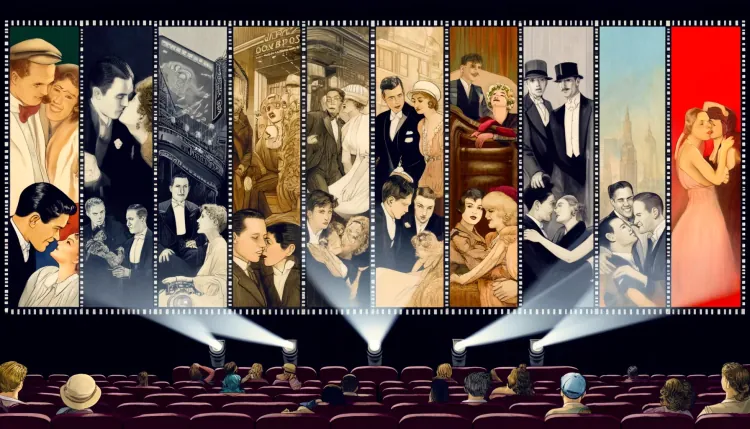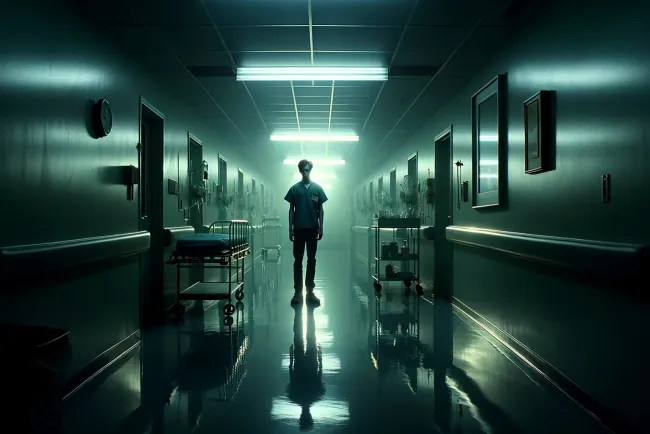Exploring the Role of Sexual Content in Cinema: A Critical Examination
Discover how the representation of sexual content in cinema has evolved, reflecting changing societal attitudes and artistic expression. Learn about its impact, challenges, and cultural significance.

Cinema has long been a mirror reflecting society's values, beliefs, and desires, and sexual content is one aspect that has been especially prominent and contentious throughout film history. As society's relationship with sexuality has evolved, so too has its representation on screen. Understanding the history, impact, and discourse around sexual content in cinema is crucial for appreciating its place in both entertainment and cultural dialogue.
Historical Evolution
The early days of cinema saw sexuality portrayed indirectly, often hidden behind metaphors and coded gestures due to the social and moral norms of the time. By the 1930s, the Motion Picture Production Code (commonly known as the Hays Code) strictly regulated the depiction of sexual relationships, making it difficult to address adult themes openly.
The relaxation of censorship in the 1960s, along with the rise of the MPAA rating system, brought about a significant shift. Filmmakers like Stanley Kubrick, Bernardo Bertolucci, and Roman Polanski began to push boundaries, introducing explicit sexual content that served various narrative purposes. This era laid the groundwork for greater freedom in exploring sexual themes.
Sexual Content in Contemporary Cinema
Today, sexual content in cinema spans a wide spectrum—from the explicitness of adult films to nuanced portrayals in mainstream dramas. Filmmakers now have the liberty to explore a diverse range of sexual themes, reflecting changes in societal attitudes toward sex and intimacy. Here are some notable aspects of contemporary sexual content:
-
Realism and Consent: Modern films increasingly emphasize realism and ethical considerations. Intimacy coordinators have become common on sets to ensure actors' safety and comfort during intimate scenes. This change reflects a broader social concern for consent and respectful depiction.
-
LGBTQ+ Representation: As acceptance of diverse sexual identities and orientations has grown, so has their representation on screen. Films like Call Me By Your Name and Moonlight have been acclaimed for their sensitive and realistic portrayal of LGBTQ+ relationships.
-
Exploring Taboo Subjects: Cinema often ventures into controversial territories, such as BDSM in Fifty Shades of Grey or polyamorous relationships in Professor Marston and the Wonder Women. By addressing taboo subjects, these films aim to challenge social norms and foster dialogue.
-
Sexual Violence: Sexual assault and violence have been portrayed in films to convey the traumatic effects on survivors. Although this depiction can bring attention to important issues, filmmakers must tread carefully to avoid sensationalism or exploitation.
Cultural Impact and Criticism
Sexual content in cinema has been both celebrated for its artistic expression and criticized for perpetuating harmful stereotypes and objectification. Some argue that it can shape unhealthy perceptions of sex, particularly among young audiences. Others point out that sex scenes often cater to the male gaze, reinforcing patriarchal standards.
On the other hand, many believe that sexual content can empower and liberate, offering a platform for conversations about identity, intimacy, and relationships. Positive portrayals can help demystify and normalize various aspects of sexuality, contributing to healthier attitudes and understanding.
Conclusion
The representation of sexual content in cinema remains a delicate balancing act, shaped by changing societal values, artistic goals, and commercial interests. Its evolution reflects an ongoing negotiation between the pursuit of creative expression and the need for responsible, respectful storytelling. As cinema continues to evolve, the conversation around sexual content will undoubtedly remain a vital part of understanding not only film as an art form but also the shifting cultural landscape that it inhabits.
What's Your Reaction?






















